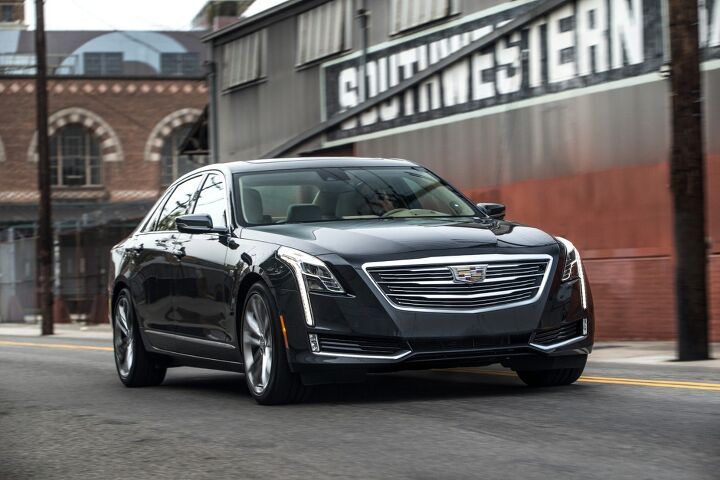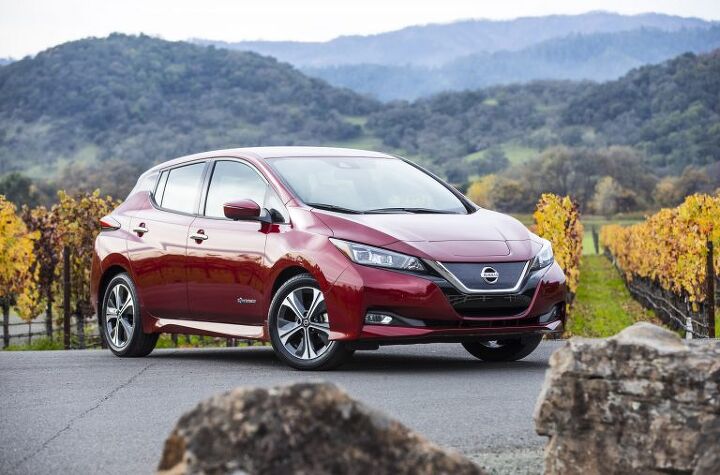Hands Off: Cadillac's Super Cruise Beats Tesla's Autopilot in First Consumer Reports Ranking

Now that new car buyers have a decent selection of semi-autonomous driving systems to choose from, Consumer Reports felt it would be a good idea to put them to the test.
Expect to see much consternation expressed on Tesla forums. The rankings, which pitted Cadillac’s Super Cruise against Tesla’s groundbreaking Autopilot, Nissan’s ProPilot Assist, and Volvo’s Pilot Assist, shows GM’s luxury marque in the lead.
What propelled Cadillac’s system to the top of the heap? The same element that gave Tesla’s system a black eye two years ago: safety.
The GM-developed system won the comparison test hands-down, and did so because it gives the driver a short leash — preventing its operation under unsafe conditions. Super Cruise literally watches the driver, and won’t let up with the nagging. We’ve lauded its usefulness in preventing incidents like this.
Tesla’s system ranked second, with the Nissan and Volvo systems coming at third and fourth, respectively. Consumer Reports said semi-autonomous systems have been on its radar for a couple of years now, but now that they’ve entered the mainstream, the publication felt it was the right time to alert buyers to the pros and cons of individual systems.
“Stacked up against each other, you can really see significant differences,” said Jake Fisher, director of auto testing. “The best systems balance capability with safeguards—making driving easier and less stressful in the right situations. Without proper safeguards, over-reliance on the system is too easy, which puts drivers at risk.”
CR also doesn’t like some of the messaging being sent to would-be buyers. It slapped Volvo for listing Pilot Assist as an “autonomous” system on its website, a falsehood the automaker quickly removed.
With Super Cruise and Autopilot, CR liked how the systems kept the vehicle centered in its lane on varying types of roadways, while the Nissan and Volvo systems couldn’t corral wandering on twisty stretches. Autopilot was judged the easiest to use, and the system makes it clear whether it’s turned on or off.
GM only lets drivers use Super Cruise when on a divided highway mapped by the automaker, while the other systems offer more freedom of use. This in itself can be a safety issue. Super Cruise also provides early warning for looming roadway changes.
“Super Cruise is the only system that provides ample warning to the driver as it approaches merging lanes, off-ramps, and difficult traffic patterns,” CR wrote. “All the other systems lack early warnings and can be used in places they’re not designed to be used. On some secondary roads, Tesla’s Autopilot limits how fast the car can go but still allows the system to be used. It even allows use on small, curvy roads with poor lane markings—and operates erratically in these situations rather than locking the system out. While bad weather can disable all the systems, Nissan’s ProPilot Assist and Volvo’s Pilot Assist lock drivers out in moderate rain.”
In terms of driver monitoring, Super Cruise — the only system to use eye-tracking technology — won handily. As each of these systems demand that the driver stay alert and be ready to take the wheel at any time, preventing cabin shenanigans is key.
“We saw significant differences among the systems in how long they waited to warn the driver to respond, ranging from 4 seconds for the Super Cruise to 24 seconds for Autopilot,” CR wrote, noting that the other three systems base their warnings on the time elapsed since the driver last placed a hand on the wheel. Cadillac’s system utilizes a seat-shaker mechanism to jolt drowsy or inattentive drivers. It also locks out the system if it feels you’re misusing it.
“This is an insufficient way of measuring driver attention,” CR said of the non-Super Cruise systems, “and it provides little assurance that the driver is even awake. Because of the impressive ability of Tesla’s Autopilot to keep the vehicle centered in its lane, it’s easy for drivers to become over-reliant on it. Pilot Assist from Volvo and Nissan’s ProPilot Assist are far less capable, and that forces drivers to stay involved with steering, or risk leaving the lane on all but the straightest roads.”
Each system behaves differently in the event the driver doesn’t respond. While the Cadillac system, after a series of audible and visual warnings similar to Tesla’s system, turns off until the next time the vehicle is restarted (a features also shared with Tesla), it will also brake to a stop in its lane, flashers on. It then calls an emergency number. A Tesla will not. Nissan’s system initiates “sudden, hard braking” after the driver fails to respond to a series of prompts. If Volvo drivers fail to respond to warnings, “the system shuts off completely and does not apply braking or any lane assist. Only if the driver has previously enabled the lane-keeping system, which is separate from the Pilot Assist system, will the vehicle detect lane departure and provide some steering.”
The takeaway from these tests is pretty obvious. Safe operation of this kind of system demands the vehicle pay close attention to what the driver is doing, and most automakers need to step up their game in this area. At a bare minimum.
[Images: General Motors, Tesla, Nissan, Volvo Cars]

More by Steph Willems
Latest Car Reviews
Read moreLatest Product Reviews
Read moreRecent Comments
- Varezhka Maybe the volume was not big enough to really matter anyways, but losing a “passenger car” for a mostly “light truck” line-up should help Subaru with their CAFE numbers too.
- Varezhka For this category my car of choice would be the CX-50. But between the two cars listed I’d select the RAV4 over CR-V. I’ve always preferred NA over small turbos and for hybrids THS’ longer history shows in its refinement.
- AZFelix I would suggest a variation on the 'fcuk, marry, kill' game using 'track, buy, lease' with three similar automotive selections.
- Formula m For the gas versions I like the Honda CRV. Haven’t driven the hybrids yet.
- SCE to AUX All that lift makes for an easy rollover of your $70k truck.





































Comments
Join the conversation
"It slapped Volvo for listing Pilot Assist as an “autonomous” system on its website, a falsehood the automaker quickly removed." It's not a falsehood. Any system that intervenes has met the minimum requirements for autonomy.
The only autonomous driving tech I really lust after is how my Dad's new F150 will back his trailer up for him. Sure, I am competent enough to do it myself, but I think it is really cool and I do it frequently enough that it would be nice.